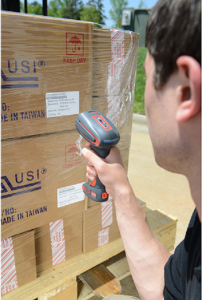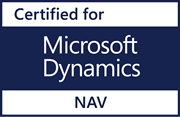5 Benefits of Barcode Data Collection Automation
Posted on August 9, 2016By David Deardorff, Barcom Inc.
If it seems you’re always looking for ways to reduce costs without compromising efficiency and productivity, then you’ll appreciate the information you’re about to read. As you probably already know, barcode data collection automation is a smart solution to consider if you’re looking to increase productivity and eliminate errors and added costs. Although automation is an investment, the benefits are so great with many organizations realizing ROI in less than 6 months.
Explore the benefits
#1. Reduce paperwork – Save on the cost of supplies, storage and labor; automated tasks are much faster to accomplish.
#2. Decrease human error – Data entry errors, illegible handwriting, and other common errors can lead to order errors, lost time and unhappy customers.
#3. Increase worker productivity – barcode scanning and data automation eliminates time spent writing down numbers, searching for paperwork and tracking down inventory.
#4. Increase visibility – Make informed decisions with real-time data; the ability to see available inventory and other useful customer and supplier data leads to better planning and profitability.
#5. Improve Customer Service – Automated processes mean fewer errors, more on-time shipments and happier customers.
Key Components
You have several choices when it comes to choosing the right equipment for your application. The first step is having a full understanding of your environment and the processes you need to automate. In general, you’ll want to have a barcode scanning device (either a hand-held or wearable scanner), or for mobile or more demanding requirements, you may want to consider a mobile computer. If you’ll need to print labels for inventory items, stocking bins, pallets or other items you’ll also need a barcode label printer.
Barcode Scanner
A hand-held scanner allows workers to get closer to the task, cordless options get them even closer with a Bluetooth wireless connection that offers the flexibility of being up to 300 feet from the base station. There are commercial and industrial-grade versions, depending on your environment. Most warehouse and distribution centers require the industrial option; this special housing gives you added protection against dust, dirt and drops to concrete. There’s even a healthcare scanner which offers a disinfectant-ready housing better able to resist the harmful effects of harsh chemicals since the devices are constantly being cleaned.
For tracking inventory, cycle counting and other tasks that require tracking large quantities of items, consider a scanning device that includes a keypad and display to speed up productivity. They are often backlit to make it easy to see in dark corners of a warehouse and some are even designed specifically for harsh conditions like a walk-in freezer or refrigerated warehouse. Configuring a barcode scanner is easy often configured by scanning the barcode that matches your requirements.
Mobile Computer
For maximum flexibility and productivity, particularly in demanding, fast-paced environments such as field service or delivery, a mobile computer may be just the ticket. Mobile computing accomplishes more with the same (or fewer) resources by drastically increasing the speed and number of tasks that can be completed. Furthermore, when network capability is active, information such as customer location, order status and truck inventory can be obtained from headquarters in real-time.
Barcode Label Printer
There are two kinds of printing technologies for label printing. Thermal transfer and direct thermal. With direct thermal technology, if the label is exposed to sunlight, direct light or heat, the paper will eventually turn black or the print will fade and the label will be unreadable. Direct thermal is typically not recommended if the label is intended to have a long life. On the plus side, this technology is superior in terms of cost and quality for short-term applications like receipts, tickets (fast food, for example), shipping labels or patient identification.
Thermal transfer printers can accept a wider variety of media than direct thermal models, including paper, polyester, and polypropylene materials. So this is a preferred technology if special coatings are required for your label, for jobs such as:
- Product tracking
- Asset tagging
- Inventory labeling
The media and ribbon must be carefully matched to ensure print performance and durability.
Choosing the right label for the job
So now that you’ve explored the barcode scanning and printing options that work best for your application, the selection of the right barcode label is an important piece that often gets overlooked. Evaluate each of the areas below to maximize the value of your solution and ensure uptime; then consult with your solution provider to match up your requirements to the perfect label!
Application
- How will your barcode label be used?
- To what material or surface will you be affixing the label?
Environment
- Will the label be exposed to extreme temperatures?
- How about environmental conditions such as direct sunlight, dirt, or other harsh conditions?
Durability
- What is the expected life of the item(s) being labeled?
- Is barcode readability and scannability required for a set period of time?
Core & Roll Size
- The barcode printer you choose will dictate the core size of your label roll as well as the outside dimension of your roll.
- Standard print width is typically 4″ with the most popular being a 4×6 label; however, a 4×2 label could also be used for receiving labels or asset tags.
Adhesive
- What is the temperature range of the environment your label will be exposed to?
- Where will the label be located?
- What level of permanence are you expecting from the label?
The right adhesive can make all the difference when it comes to your barcode label staying where intended. Standard adhesives will perform well in most applications, but if you have a particularly harsh environment (outdoors, freezer, etc.) or are applying the label on an unusual surface or material you may require a more industrial adhesive.
Having a clear idea of how your label will be used is the first step to choosing the best label for your application.
Consider a Hardware Bundle Selected Specifically for your Application
For a limited time, we’ve created hardware bundles to help you quickly and efficiently assemble the right equipment for your application. After answering a few quick questions, our hardware experts will determine which model scanner, printer and other accessories would be best for your application and environment to make it easy to get up and running in no time. Contact me today at ddeardorff@barcominc.com for advice and recommendations on hardware, and take advantage of the great pricing we are offering to maximize productivity and increase operating efficiencies in your warehouse.
David Deardorff is a barcode automation specialist and veteran in data collection applications in the warehouse at Barcom, Inc., a Lanham Preferred Hardware Partner.


